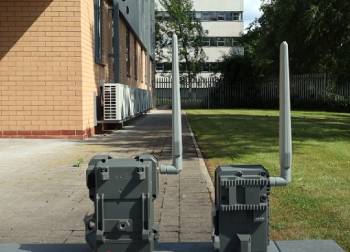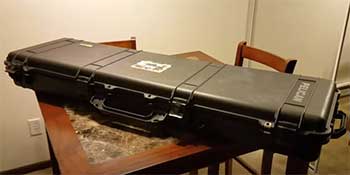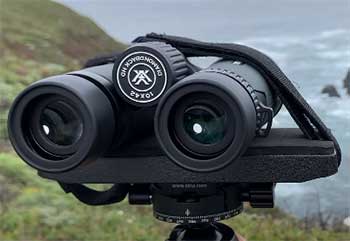I’ve spent countless hours scouting with trail cameras, and picking the right one can make or break your hunting season.
In this article, I’ll compare the Spypoint LM2 and Flex, two cellular trail cameras designed to keep you connected to the field.
From my hands-on experience, I’ll break down their features, performance, and value to help you choose.
Whether you’re tracking bucks or securing your property, this guide covers pros, cons, and key differences to ensure you get the best camera for your needs.
Let’s find your perfect scouting tool.
Comparison Table: Spypoint LM2 Vs. Spypoint Flex
| Feature | Spypoint LM2 | Spypoint Flex |
| Price | $99.99 | $169.99 |
| Photo Resolution | 20MP (interpolated) | 33MP (interpolated) |
| Video Capability | None | 1080p with sound |
| Trigger Speed | 0.5 seconds | 0.3 seconds |
| Detection Range | 90 ft | 100 ft |
| Flash Range | 90 ft (infrared) | 100 ft (low-glow) |
| Battery Life | 1.8 months (15 pics/day) | 1.8 months (15 pics/day) |
| GPS | No | Yes |
| Connectivity | Optimized antenna, LTE | Dual-SIM, auto-connects to best carrier |
| Modes | Photo, multi-shot | Photo, video, time-lapse, time-lapse+ |
My Experience with Spypoint LM2 and Flex

Hunting’s in my blood, and trail cameras are my eyes in the woods when I’m not there.
Last season, I tested the Spypoint LM2 and Flex on my favorite public land spot in a South Dakota river-bottom, chasing whitetails through wet falls and snowy winters.
The LM2, at $99.99, was my budget pick, and the Flex, at $169.99, promised premium features.
Both are cellular cameras, sending photos to the Spypoint app, but their differences became clear fast.
Setting up the LM2 was a breeze. I scanned the QR code, paired it with the app in minutes, and had it running on a tree overlooking a deer trail.
Its 20MP photos were crisp, especially daytime shots of does grazing.
Night images, with a 90-foot infrared flash, caught bucks clearly, though close-up shots had slight white-out.
The 0.5-second trigger speed grabbed most animals, but I missed a few fast-moving ones.
Battery life was a pain—1.8 months with 15 daily photos meant frequent swaps, especially in sub-zero temps.
The Flex, with its dual-SIM setup, connected to the strongest signal (AT&T in my area) without fuss.
Its 33MP photos were sharper, and the 1080p video with sound let me hear bucks grunting, adding intel to my scouting.
The 0.3-second trigger speed rarely missed action, and the 100-foot detection range covered a wider scrape.
GPS tracking was a lifesaver when a trespasser messed with my setup—I pinpointed it via the app.
But battery life matched the LM2’s, disappointing for the price.
Both cameras delivered, but the Flex felt like a step up for serious hunters.
The Pros of Spypoint LM2

- Affordable Price: At $99.99, the LM2 is a steal for a cellular camera. It’s perfect for budget hunters or those needing multiple units.
- Clear Photos: The 20MP photos are sharp for scouting. Daytime shots showed antler details clearly, and night images were reliable.
- Easy Setup: The Spypoint app and QR code made activation simple. I had it running in under five minutes.
- Reliable Connectivity: The optimized antenna grabbed a solid LTE signal. Even in spotty rural areas, photos hit my phone consistently.
- Compact Design: Its small size blends into trees. I tucked it into tight spots without spooking deer.
The Cons of Spypoint LM2
- No Video: The LM2 only takes photos, which frustrated me when I wanted video to analyze animal behavior.
- Poor Battery Life: Lasting 1.8 months with 15 daily photos, it drained fast in cold weather. I swapped batteries twice in a season.
- No GPS: Without GPS, theft is a risk. I worried about losing it on public land with no way to track it.
- Oversensitive Trigger: Even on low sensitivity, it snapped empty photos on windy days. This ate up my 100 free monthly photos fast.
The Pros of Spypoint Flex

- High-Resolution Photos: The 33MP photos are crisp, showing fine details like antler velvet. I could zoom in without losing clarity.
- Video with Sound: The 1080p videos with audio added context. Hearing a buck’s grunt helped me plan my hunt better.
- Fast Trigger Speed: At 0.3 seconds, it caught every animal, even sprinting coyotes. I missed nothing in the frame.
- GPS Tracking: GPS let me track the camera’s location. When someone tampered with it, I knew exactly where it was.
- Versatile Modes: Photo, video, time-lapse, and time-lapse+ modes gave flexibility. I used time-lapse+ to monitor a field edge effectively.
The Cons of Spypoint Flex
- Higher Price: At $169.99, it’s pricier than the LM2. I questioned if the extras justified the cost for casual use.
- Battery Life Issues: Like the LM2, it lasts 1.8 months with 15 daily photos. I expected better for a premium model.
- Fragile Antenna: The antenna felt flimsy and loose. I worried it might snap during transport in my backpack.
- False Triggers: On field edges, sun and shadows triggered empty photos. Moving it to woods helped, but it was annoying.
Why Spypoint LM2 and Flex Matter
Trail cameras are game-changers for hunters, and Spypoint’s cellular models keep you connected without trekking to your spot.
I’ve used both the LM2 and Flex for scouting whitetails, and they’re built for different hunters.
The LM2, an evolution of the popular Link-Micro, is a budget-friendly powerhouse for photo-only scouting.
The Flex, with its video and GPS, suits those wanting deeper intel and security.
Both use the Spypoint app, offering 100 free photos monthly, but their performance and features cater to distinct needs.
The LM2’s 20MP photos and 90-foot detection range make it a solid entry-level choice.
Its compact design and optimized antenna ensure reliable photo delivery, even in rural areas.
I set mine up on a deer trail, and the app pinged me with clear shots of bucks within hours.
But its lack of video and GPS limits its versatility, and battery life struggles in harsh conditions.
At $99.99, it’s ideal for beginners or multi-camera setups.
The Flex, introduced in 2022, steps it up with 33MP photos, 1080p video, and a 0.3-second trigger speed.
Its dual-SIM tech auto-connects to the best carrier, which worked flawlessly in my spotty-coverage area.
GPS tracking gave peace of mind on public land, and video mode added audio intel, like a buck’s grunt, that photos can’t capture.
But at $169.99, the battery life (1.8 months) and fragile antenna disappointed me.
The Flex’s time-lapse+ mode, combining scheduled shots with motion triggers, was great for monitoring large fields.
Your hunting style and budget will decide your pick.
The LM2 suits casual hunters or those on a budget, while the Flex is for serious scouters needing video and GPS.
I loved the Flex’s extra features but leaned on the LM2 for cost-effective setups.
Both cameras face issues like battery life and false triggers, but their app-driven ease and cellular connectivity make scouting smarter.
Also Read: Comparison of SPYPOINT Vs. Tactacam Cellular Trail Camera For Hunting
Key Features That Set Them Apart

The LM2 and Flex differ in tech and functionality, shaping their use in the field.
The LM2, part of the Link-Micro family, focuses on simplicity and value.
Its 20MP camera delivers clear photos, and the 0.5-second trigger speed catches most wildlife.
The 90-foot detection and flash range cover decent ground, and the optimized antenna ensures reliable LTE connectivity.
I found its multi-shot mode (up to two photos per trigger) useful for capturing sequences, but the lack of video and GPS feels limiting.
It uses 8 AA batteries or a Spypoint LIT-10 pack, and supports microSD cards up to 32GB.
The Flex, a step up, boasts a 33MP camera for sharper images and 1080p video with sound, adding behavioral insights.
Its 0.3-second trigger and 100-foot range make it more responsive, catching fast movers. Dual-SIM technology auto-selects the best carrier, a boon in rural areas.
GPS tracking, absent in the LM2, adds security—crucial after my camera was tampered with.
The Flex’s time-lapse+ mode combines scheduled shots with motion triggers, perfect for large areas.
It supports microSD cards up to 512GB and uses 8 AA or LIT-22 batteries.
However, both cameras share battery life woes, and the Flex’s antenna feels less durable.
The LM2’s compact design and affordability make it a go-to for photo-only scouting.
The Flex’s advanced features—video, GPS, and versatile modes—cater to hunters wanting richer data.
I used the LM2 for quick setups on tight trails, while the Flex shone on open fields where video and range mattered.
The Flex’s higher price reflects its tech, but the LM2’s value is hard to beat for basic needs.
Also Read: Comparison of Moultrie Edge Vs. Tactacam Reveal X Trail Cameras
Frequently Asked Questions (FAQs)
Yes, the LM2 outperforms the Link Micro with a 20MP camera, faster 0.5-second trigger, and optimized antenna for better connectivity, making it a clear upgrade.
Yes, the LM2 has infrared night vision with a 90-foot flash range, capturing clear black-and-white photos in low light.
The Flex G-36 has a 36MP camera, 1080p video, 0.3-second trigger, 100-foot range, and GPS, while the LM2 is photo-only with 20MP and no GPS.
No, the LM2 lacks GPS, unlike the Flex, which includes GPS tracking for added security and location monitoring.
Final Thoughts
Your trail camera choice can elevate your hunt, and the Spypoint LM2 and Flex deliver in different ways.
The LM2’s affordability and solid photos made my scouting budget-friendly, perfect for multiple setups.
The Flex’s video, GPS, and faster trigger gave me richer intel, ideal for serious hunters.
Pick the LM2 for value or the Flex for premium features—you’ll stay ahead of the game either way.

